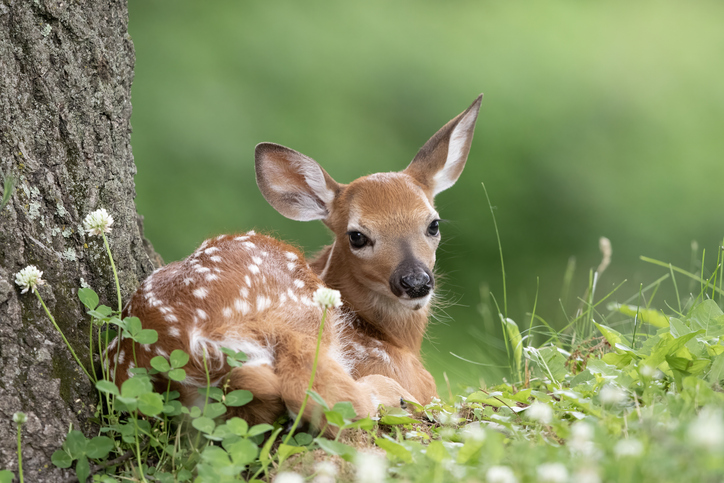Leave Fawns Alone

As spring ushers in its vibrant blooms and new life, it’s not uncommon to come across a seemingly abandoned fawn nestled quietly in the grass. While our instinct to help may be strong, it’s crucial to resist the urge to touch or interfere with these delicate creatures. Here’s why:
1. The Mother Knows Best:
Contrary to popular belief, mother deer are attentive caregivers. They often leave their fawns hidden in safe locations while they forage for food nearby. This behavior is not neglect; it’s an instinctual strategy to protect their young from predators. The scent of humans or other animals on the fawn can attract unwanted attention, jeopardizing its safety.
2. Stress and Trauma:
Fawns are incredibly vulnerable in their early days of life. Handling them can cause significant stress and trauma, potentially leading to injury or even death. The sudden presence of a human can trigger a fear response, prompting the fawn to flee blindly into danger or become paralyzed with fear, making it an easy target for predators.
3. Disease Transmission:
Wildlife carries a variety of diseases, some of which can be transmitted to humans. Handling a fawn increases the risk of disease transmission for both the animal and the person involved. Additionally, disturbing the fawn’s environment can disrupt the natural balance of its habitat, leading to further ecological consequences.
4. Legal Implications:
In many regions, it is illegal to interfere with or handle wild animals, including fawns. Intervening with wildlife without proper authorization can result in fines or legal penalties. It’s essential to respect local regulations and trust in the expertise of wildlife rehabilitators if intervention is truly necessary.
5. Nature’s Course:
Nature has a way of balancing itself, and wild animals are equipped with survival instincts honed over generations. While it may be difficult to witness a fawn seemingly alone, it’s crucial to remember that this is a natural part of their development. Most often, the mother will return to care for her offspring once she feels it’s safe to do so.
6. Contacting Authorities:
If you encounter a fawn that appears to be injured or in distress, the best course of action is to contact local wildlife authorities or rehabilitation centers. These professionals have the knowledge and resources to assess the situation accurately and provide appropriate care if necessary. Observing from a distance and allowing nature to take its course is often the most responsible choice.
While our intentions may be good, interfering with a fawn left alone can have serious consequences for both the animal and ourselves. By respecting nature’s processes and resisting the urge to intervene, we can ensure the well-being and survival of these beautiful creatures for generations to come. Let’s cherish their presence from afar and leave them to thrive in their natural habitat.








